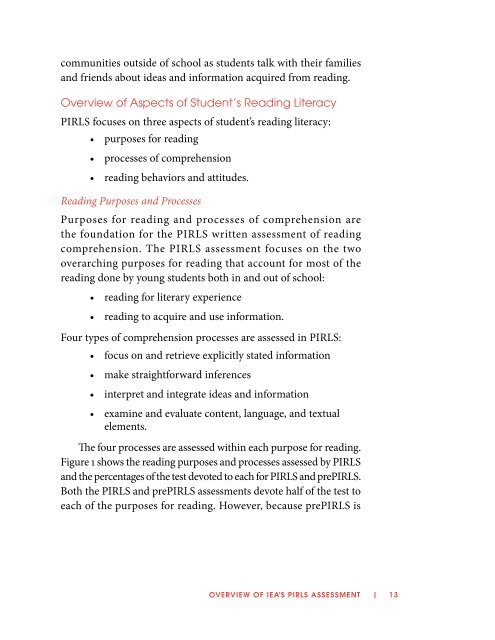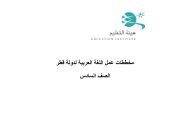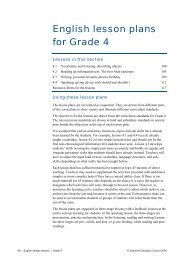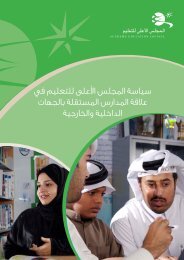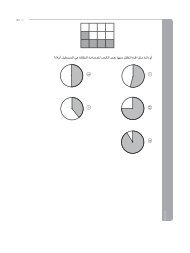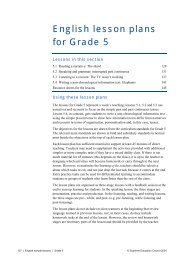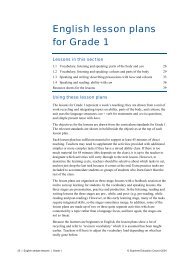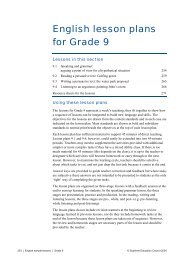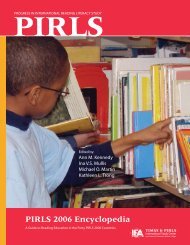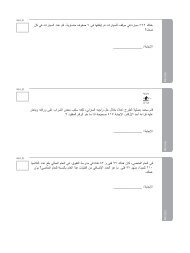PIRLS 2011 Assessment Framework - Proj AVI
PIRLS 2011 Assessment Framework - Proj AVI
PIRLS 2011 Assessment Framework - Proj AVI
- No tags were found...
Create successful ePaper yourself
Turn your PDF publications into a flip-book with our unique Google optimized e-Paper software.
communities outside of school as students talk with their familiesand friends about ideas and information acquired from reading.Overview of Aspects of Student’s Reading Literacy<strong>PIRLS</strong> focuses on three aspects of student’s reading literacy:• purposes for reading• processes of comprehension• reading behaviors and attitudes.Reading Purposes and ProcessesPurposes for reading and processes of comprehension arethe foundation for the <strong>PIRLS</strong> written assessment of readingcomprehension. The <strong>PIRLS</strong> assessment focuses on the twooverarching purposes for reading that account for most of thereading done by young students both in and out of school:• reading for literary experience• reading to acquire and use information.Four types of comprehension processes are assessed in <strong>PIRLS</strong>:• focus on and retrieve explicitly stated information• make straightforward inferences• interpret and integrate ideas and information• examine and evaluate content, language, and textualelements.The four processes are assessed within each purpose for reading.Figure 1 shows the reading purposes and processes assessed by <strong>PIRLS</strong>and the percentages of the test devoted to each for <strong>PIRLS</strong> and pre<strong>PIRLS</strong>.Both the <strong>PIRLS</strong> and pre<strong>PIRLS</strong> assessments devote half of the test toeach of the purposes for reading. However, because pre<strong>PIRLS</strong> isoverview of IEA’s <strong>PIRLS</strong> <strong>Assessment</strong> | 13


